Humans aren’t the only biological entities to suffer dwarfism resulting from a stark shortage of growth hormones. Our fur friends experience the same fate too. Despite the fact that dwarfism in dogs is quite a rare condition, some breeds are more susceptible to this health condition than others.
In this article, we will discuss what is skeletal dwarfism in dogs and how does it affect canines’ quality of life. We will also highlight which breeds are genetically predisposed to this condition, and how to provide the best possible care for the affected dog.
What is dwarfism in dogs?
Dwarfism in dogs is a condition when there is a deficiency in growth hormones available for use by the animal.
Otherwise called pituitary dwarfism, this condition is caused by the underdevelopment of the pars distalis of the young puppy, especially during the gestation period.
Once the pars distalis fails to function correctly, the whole of the pituitary gland becomes deficient in secreting growth hormones.
Craniopharyngiomas (benign brain tumours) can develop in the first stages and can be a culprit of dwarfism in dogs.
When the pharyngeal ectoderm of the Roethke’s pouch (cranial pharyngeal duct) doesn’t break down into cells that secrete trophic hormones in the pars distalis, dwarfism is the resultant effect.
Not only does dwarfism in dogs cause stunted growth or poor development, but it can also affect the pet’s life quality and even reduce its lifespan.
Some dog breeds are particularly prone to suffering dwarfism – German shepherds, miniature pinscher, Spitz, Karelian bear dog, amongst others.
Therefore, it means that dwarfism in dogs is a hereditary condition often passed on as a recessive trait.
In some dogs, dwarfism is a result of selective breeding, like in dachshunds, while in other dogs, it is considered a severe health condition.
Dwarfism In Dogs: Osteochondrodysplasia
The skeletal dwarfism in dogs is otherwise known as osteochrondodysplasia or OCD. The term consists of three words and means developmental abnormalities occurring in a dog’s bone and cartilage.
These abnormalities cause slow bone growth and deformities in the canine.
The term osteochrondodysplasia can be dissected into three derivative words – “osteo,” which stands for bone, “chondro” refers to cartilage, and dysplasia is a term that describes an abnormal growth.
Dwarfism In Dogs: Achondroplasia
Dogs suffering achondroplasia do not grow as big as is expected because their bones fail to develop.
This condition is the most apparent form of osteochrondodysplasia or dwarfism in dogs. Furthermore, it is a condition that occurs when there is a mutation of the fibroblast growth receptor gene.
Tell-Tale Signs of Dwarfism in Dogs
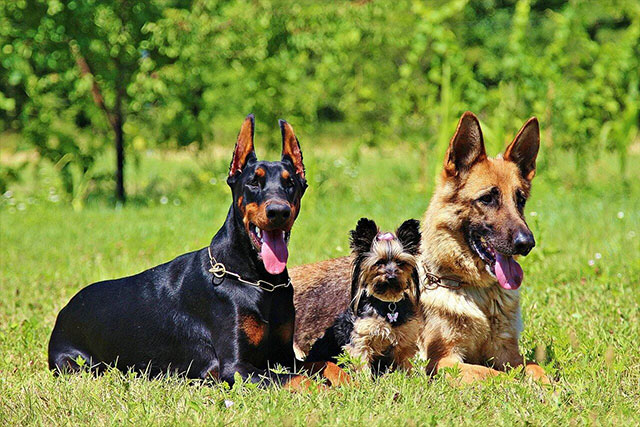
When you look at your dog, you ought to be aware of any aberration in its growth pattern.
Most dogs that suffer dwarfism have similar symptoms, which all reflect a genetically acquired bone disorder.
The symptoms of pituitary dwarfism in dogs are the following:
- Slow or total lack of growth. For instance, abnormally short legs, which are a result of a delay in the closure of growth plates in the long bones. It becomes visible when the dog becomes at least six months old.
- Head becomes larger than normal.
- Joints become enlarged.
- Shorter jaws, resulting in crooked teeth. Sometimes the puppy teeth are retained for longer than usual, inhibiting the development of adult teeth.
- Badly shaped bones
- Forelimbs bow sideways
- Spinal cord becomes deviated to either side of the body.
- The puppy coat is retained longer than necessary (alopecia), which eventually leads to an asymmetrical pattern of hair loss.
- Heart issues
- Fear and aggression
Can Dwarfism in Dogs Be Treated
If you notice any of the above symptoms or signs in your dog, it might be affected by pituitary dwarfism. Now is the time to involve your veterinarian.
There will be a series of urine analysis, blood tests, and biochemical profiling to measure if your dog’s growth hormones are in the right proportion.
Your vet can also insist on the X-ray scans to identify the extent of dwarfism as well as bone biopsies.
It is possible to treat and manage skeletal dwarfism in dogs; however, the treatment may have some disadvantages like thyroid and adrenal gland compromise.
Dwarfism is a genetic problem, and breeders often desex dogs with the condition. When a dog’s health condition becomes too critical with an adverse effect on its market value, breeders resort to euthanasia.
On the positive side, dwarfism in dogs can also be managed with prescribed dosages of growth hormone injections, administered to these dogs for as much as several months.
However, in some cases, the thyroid and adrenal glands of the animal become compromised. In this case, it can be solved by replacement therapy.
To prevent the progression of dwarfism in mature dogs, vets can resort to spaying or neutering.
Spaying
Spaying is a process the vet surgeons carry out on female dogs. To be specific, it is the removal of a female dog’s reproductive organs like the uterus and ovaries (ovariohysterectomy), thereby eliminating its heat period. Sometimes it is only the ovaries that are removed (ovariectomy).
This process can cease both the ability to reproduce and any breeding instinct left in the dog, thereby reducing the chances of transferring any genetic dwarfism to an offspring.
Neutering
Neutering is the same as castration, that a vet surgeon performs on male dogs. Just like spaying for females, neutering involves removal of the males’ reproductive organs, thereby making it lose its ability to reproduce or pass on any recessive dwarfism traits.
Furthermore, if the dog has light dwarfism, it would just make do with anti-inflammatory drugs in case of joint pains.
Living With and Managing a Dog with Dwarfism
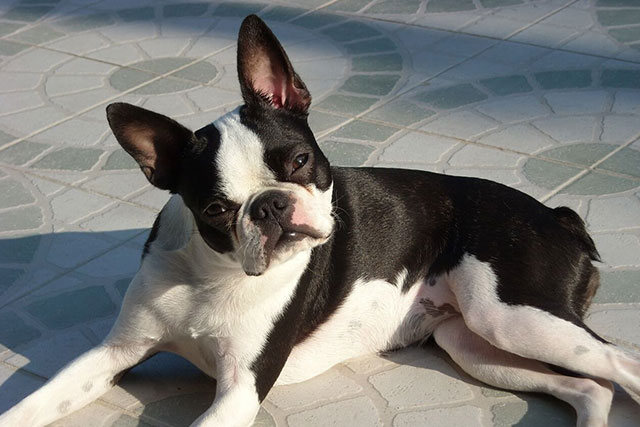
There isn’t a one-size-fits-all kind of treatment for dwarfism in dogs.
Moreover, the prognosis of the illness mostly relies on the severity of the disease.
While various treatments or management options could be used on the dogs living with this condition, the results are going to depend on the level of damage the bones have acquired.
In some dogs, osteochrondodysplasia can be managed despite that it would lead to a reduction in the pet’s mobility. However, in other dogs, dwarfism can bring about incapacitation.
If your dog is suffering from this condition, you must be aware that as it ages, it becomes prone to other health issues like obesity, arthritis, and joint pains.
It is essential to give your dog a healthy diet and adequate physical exercise for its body weight regulation.
You can also give your dog specific supplements to relieve the symptoms, such as:

and Joint Aid

If your vet recommends pain-relieving drugs, ensure you follow the dosage strictly because you don’t want to lose your pet to a drug overdose.
The best way to help your dachshund live longer?
Watch our video to find out!
Dwarfism in Dogs and How It Affects Their Lifespan
There are different opinions on how dwarfism affects a dog’s lifespan. Vet records support that dwarfism reduces a dog’s lifespan to about four years.
However, some controversies surround this assumption. It is because there isn’t enough data to support the claim at the time.
The best available data was collected at the University of Utrecht, the Netherlands. The researchers further claimed that the lifespan of dwarf dogs to be approximately five years.
However, this research is not conclusive and can’t speak for the global populace of dogs with dwarfism.
The thing is, the studies at the University of Utrecht spanned over 20 years and across Europe. They asserted that a dwarfed dog, when treated, could live 5, sometimes up to 7 years.
Nevertheless, in some individual cases, dwarfed dogs have lived for up to 13 years!
Either way, a dwarfed dog’s lifespan is severely compromised, depending on the severity of the condition.
Dwarfism in Several Dog Breeds
As mentioned earlier, some dog breeds are genetically predisposed to pituitary dwarfism.
Although there are a few breeds that have been bred specifically to have shorter legs and longer bodies, in most cases, dogs suffer bone deformity and pituitary dwarfism at the gestation and puberty stage.
For this reason, if you want to own or adopt a dog, it would be essential to know a little about your proposed breed’s background. In this case, you will know what you’re getting into and how to care for your pet.
Below is a list of some dog breeds that are prone to pituitary dwarfism:
- Basset hounds
- Bulldogs
- German shepherds
- Boston terrier
- Pugs
- Pekingese
- Shih Tzu
- Labrador retriever
- Japanese spaniel
- Cocker spaniel
- English pointer
The most common breeds for being prone to pituitary dwarfism in the above list are German shepherds, Pugs, and Labrador retrievers.
Dwarfism in German Shepherds
German shepherds are mostly prone to dwarfism, although they are not the only breed that can be affected.
A healthy adult German shepherd ought to be as tall as 21.5 inches, at least – whether male or female.
When an adult dog of this breed stands at below this height, it means that skeletal dwarfism has occurred.
Dwarfism in Labrador Retrievers
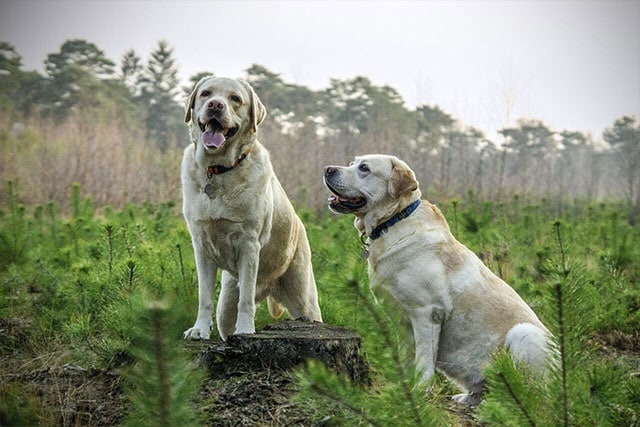
Skeletal dwarfism is often genetically transferred as a recessive gene in Labradors. In other words, to have this ailment; the dog has to receive the mutated gene directly from both parents.
It means the parents might have this recessive genetic ailment, which only becomes visible in the offspring that acquires a copy from both.
Besides, the statistics shows that puppies have a 25% risk of suffering dwarfism and about 50% risk of acquiring a mutated gene from their parents.
Dwarfism in Pugs
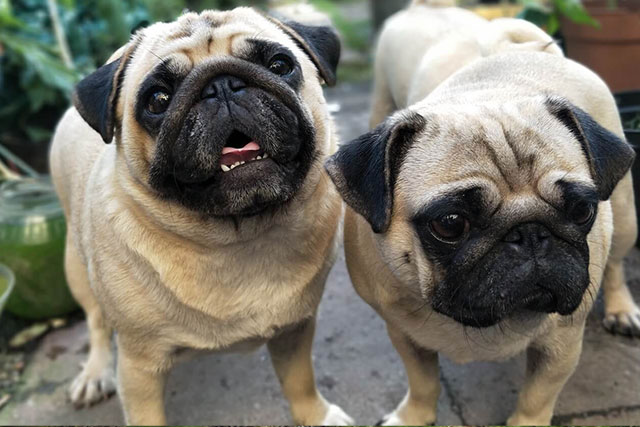
If you want to adopt a pug, be sure to collaborate with your breeder and make a choice of puppy carefully. Pugs of any type are prone to suffering several ailments.
Carefully check the nostrils and muzzle length of your pug before buying. A pug with narrow nostrils or short muzzle is a No-No.
Furthermore, you must select a breeder that carries out pre-breeding health analysis on their puppies before buying to stand a chance of owning a healthy pug.
Is Dwarfism The Desired Trait In Dogs?
Your first instinct when answering this question, would be to say ‘Of course, not!’. In humans, even in dogs, dwarfism isn’t a desirable trait, and has never been.
However, modern-day has seen selective breeding of dwarfed dogs.
They don’t suffer any form of achondroplasia but they look disproportionally shorter.
Breeders selectively and carefully bred dogs like Dachshunds, Beagles, Pomeranians, Chihuahuas, Welsh Corgis, and Basset Hounds to appear dwarfed.
From the days of ancient Rome, people breed these dwarfed dogs for hunting small animals or herding like the case of dachshunds. Hunters could also keep up with these dogs, and the dogs could enter smaller places where their prey, such as vermin, could be hiding.
However, it doesn’t mean all dwarfism in dogs is desirable. Pituitary dwarfism in a breed like the German shepherd could speak volumes of negativity in the dog’s life.
It implies that besides selectively bred dwarfed dogs, dwarfism isn’t a desirable trait in any dog.
Since Dogs Can Be Dwarfs, Can They Also Be Gigantic?
There is a phenomenon by the name of Acromegaly, which describes gigantism in dogs.
The pituitary glands produce somatotropin (a growth hormone). Ideally, as the dog becomes an adult, a growth hormone should gradually decrease.
When the pituitary gland produces too much somatotropin, it leads to extreme growth in the dog’s bones and mammary glands.
Dogs suffering from Acromegaly have noisy breathing, enlarged tongues, stiffness, excessive urinating, hair loss, skin folds, pale gums, large jawbones, arthritis, lethargy, excessive panting, and heart failure.
If your dog suffers from Acromegaly, then the vet can prescribe a growth inhibitor known as somatostatin. You should also keep away your pet from any medication that contains progesterone.
Conclusion
Dwarfism in dogs is a severe condition that can endanger a dog’s life quality.
Pituitary dwarfism (PD) is a serious genetic ailment that opens a portal to several other illnesses in your canine – most of which are life-threatening.
However, not all dwarfed dogs have achondroplasia.
Some canines are specifically bred with such traits for a particular activity or work.
PD is not the end of the road for your dog. There are several means of managing the condition, using several dosages of hormone injections.
The veterinarian can also perform a surgery to correct the condition but might have side effects on your dog.
If you already own a dog that is, unfortunately, affected with skeletal dwarfism, don’t be scared. It is when your dog needs you the most.
Proper diet, adequate exercise, and loads of love can help your dog live a quality and fulfilling life.
However, if you want to buy or adopt a dog and want to stay off dogs with this ailment, you need to work with a trustworthy breeder and stick to his/her advice.
Generally, CBD oils can be an excellent supplement for dogs with pituitary dwarfism. It helps to treat anxiety, neurological disorders, as well as prevent joint issues and arthritis. Please check the range of natural CBD oils we recommend!
MaxHemp Hemp Oil for Dogs and Cats, 3000 mg

Organic Pet Hemp Oil, 2000mg, by Hemp Solutions



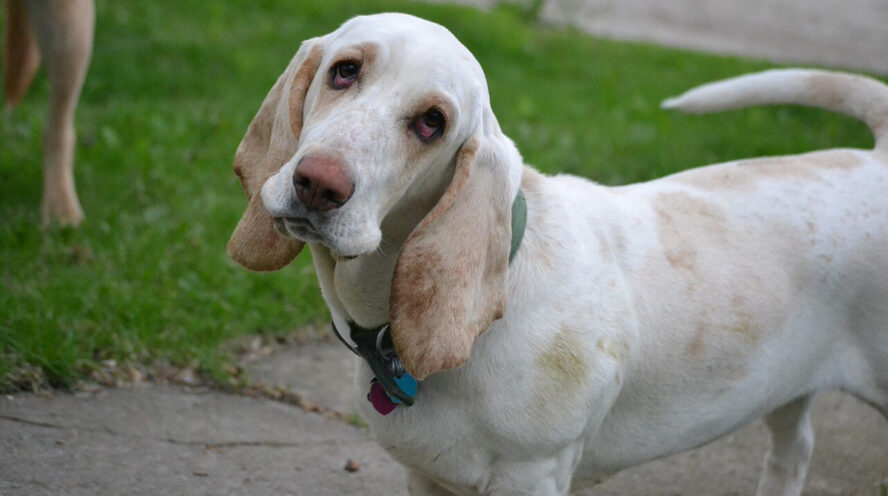
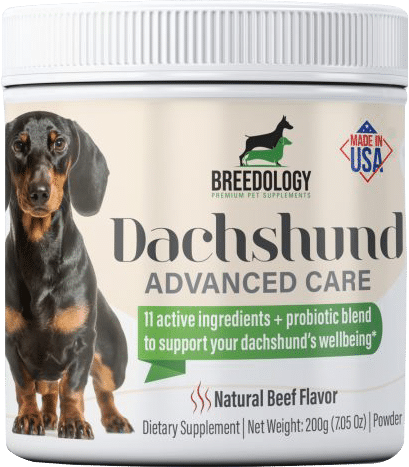
Comments
Pingback: ¿Es Posible Tener Un Border Collie Miniatura Como Mascota?
Can a dog exhibit symptoms of osteochondrodysplacis if it only carries one gene? I have a pup with one gene and he has odd big joints, long back, short thick legs, big head, lots of loose skin, and laid back more than any puppy ive ever been around.
I rescued my pitbull Peterbilt from a horrible person. Peter was 3 when I got him, so there was not too much we could do for his dwarfism. My vet said Peter probably wouldn’t live to see his 5th birthday, well Peter is now 11 and still going strong!!
This is amazing news! We wish Peter many happy years ahead!
Does the Sire and Dam have to carry the dwarfism gene for if to be passed…or is passed on by just one parent
I just adopted a “pocket pug”; the breeder never used the word “dwarfism” but she described everything this article does. My puppy is active, happy and spunky. I have her 1st vet appointment in 10 days. After reading this, I’m terrified I made a horrible mistake in adopting her…what can I do to ensure she lives longer than 4-5 years? I just lost my 14 year old pug and I do not want to deal with that grief again so soon!
Hi Linda, There is no such recognized breed as the Miniature or Pocket Pug.
The AKC (American Kennel Club), or any other significant dog breed association, does not recognize a miniature Pug as a breed of variety like it is with the dachshund breed.
The pocket or hand-bag sized dogs are in fashion today, which leads to unscrupulous breeding of the smaller sized dogs. Many discourage the mixing of purebreds.
In my view, it does go against breeders’ goals of maintaining integrity and improving the bloodlines of the purebred.
Despite that, your puppy may not have any health conditions associated with the risks of breeding two runt pug dogs.
During your first appointment, the vet should be able to examine the puppy and notice any early signs of dwarfism. ( growth delay, joint issues, etc.) However, as I said earlier, a runt puppy doesn’t mean a sick puppy. I hope your baby pug will have a long and happy life ahead!